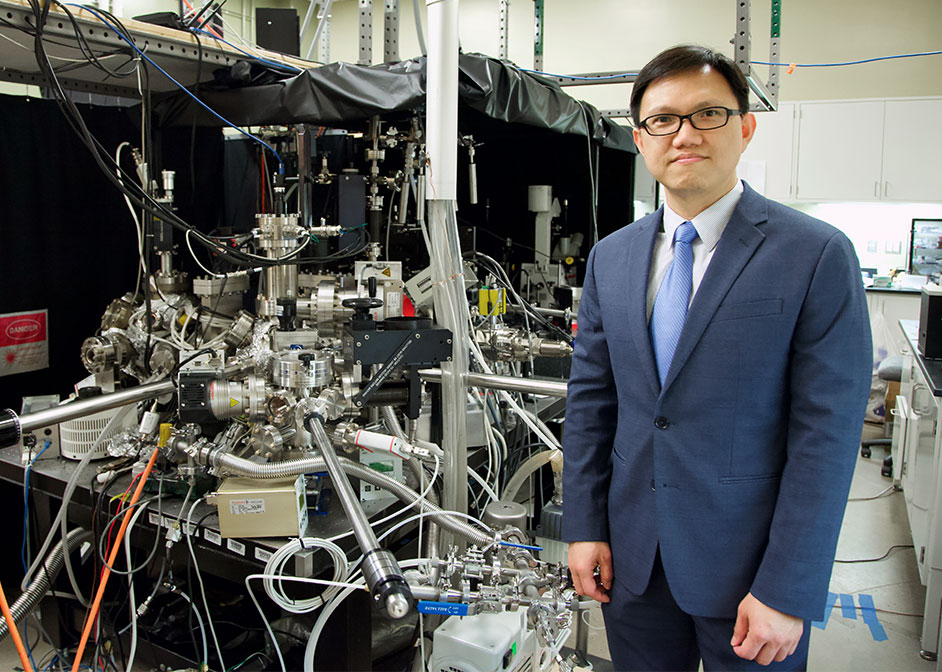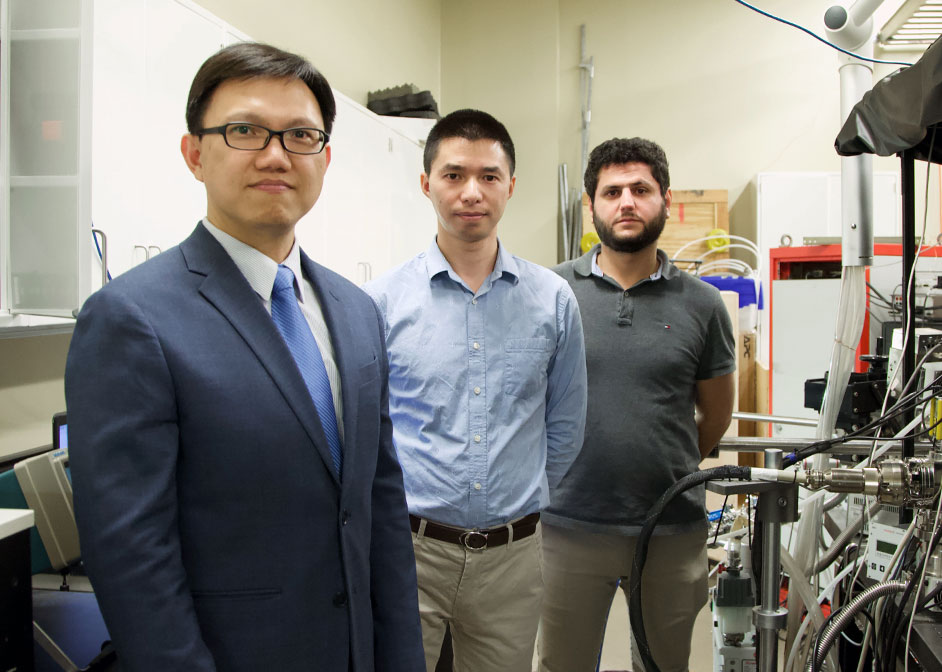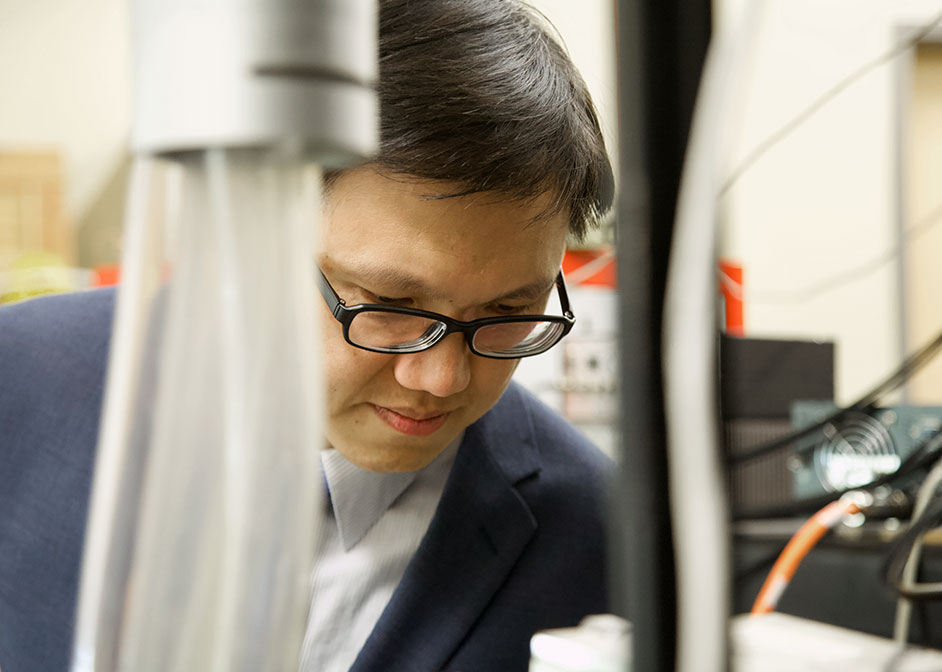Research Team Visualizes Atomic Motions on Surface of Ultrathin Material
For years, researchers have relied on graphene as the most popular example of a two-dimensional (2D) material that has a thickness of less than a nanometer.



Thousands of patents have been awarded for the various fabrication methods and applications of graphene.
University of Houston associate professor of chemistry Ding-Shyue (Jerry) Yang and his research group at the College of Natural Sciences and Mathematics wanted to find out whether other 2D materials behave similarly if they exhibit a reduced thickness comparable to graphene.
Investigating Molybdenum Disulfide
His research team, made up of chemistry Ph.D. student Mazhar Chebl and post-doctoral researcher Xing He, studied molybdenum disulfide (MoS2). The compound is widely considered for various potential electronic applications.
In their publication in the American Chemical Society’s Nano Letters, they found MoS2 to have nearly isotropic atomic movements, meaning that the motions perpendicular to the compound’s ultrathin sheet resemble those along the sheet. Yang said, “this finding is somewhat counterintuitive and quite unexpected and prompts further research on other 2D materials to better understand the similarity and differences among them.” Graphene, in contrast, shows much larger perpendicular atomic motions, as anticipated from its less-than-a-nanometer thickness.
The team captured the atomic movements on the time scale of a millionth of a millionth of a second or faster, using a technique called reflection ultrafast electron diffraction. This technique has ultrafast time and subatomic spatial resolutions. Together, these resolutions can achieve the photographic vision that is capable of resolving tiny atomic movements. Yang said his UH lab is one of the few laboratories in the world that can conduct such experiments.
The team’s findings of molybdenum disulfide and the interaction between the compound and a supporting solid could help understanding of heat dissipation and heat management, if a 2D material is used in an electronic device. In Yang, et al.’s publication, sapphire was used as the supporting solid.
Research Supported by CAREER Award
In 2017, Yang received a CAREER Award from the National Science Foundation, and it continues to fund much of his research, including his research on molybdenum disulfide. The award funds his study of the interfacial behavior of different materials. The research was also supported by grants from the Welch Foundation and the Samsung Global Research Outreach program.
Yang said he is proud that his small team accomplished something that typically larger teams can accomplish. He plans to continue study of 2D materials.
- Rebeca Trejo, College of Natural Sciences and Mathematics